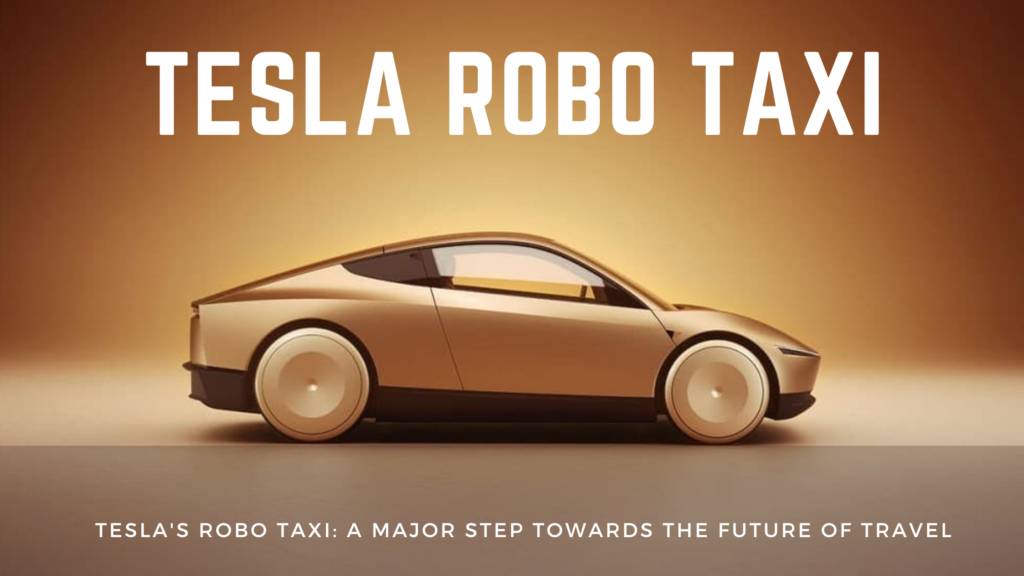
During its just concluded Wii Robot event, Tesla launched a fully autonomous Robo taxi that spells out the future of transportation completely without any steering wheels, pedals, or drivers. Production is expected to commence in 2026 at less than $30,000.
Technology Behind Tesla’s Robo Taxi
The most interesting aspect of Tesla is the Robo taxi which uses proprietary Full Self-Driving (FSD) technology that is dependent upon cameras and AI. Tesla is different from its competitors, who use LiDAR in combination with radar technologies, based on visual data to replicate human behavior in driving.
Improvement of FSD by Tesla and Challenges
Tesla’s FSD has made several steps but is nowhere near achieving full autonomy. So far, this requires human oversight and securing regulatory approvals are the greatest challenges. Elon Musk boasts of unsupervised self-driving next year in California and Texas though skepticism exists.
Scalability: Tesla’s Competitive Advantage
This has scalability advantages from the side of Tesla. The system is continuously updated by direct download via its fleet and, thereby, has an advantage over its competitors due to the dependency on expensive sensors.
Competitors and Tesla’s Unique Advantages
If Waymo, Zoox, and GM’s Cruise were not enough, Tesla has one more advantage for the fact that the company’s Robo taxi is affordable and will therefore unlock mass acceptance. While competitors are fixated on a purpose-designed fleet, Tesla views it as where owners just send out the car as a source of passive income.
Advantage through data: Tesla vs. Competition
With millions of vehicles on the road, Tesla would have the data-crunching capacity, which is so crucial to train its AI. This immense advantage might help place Tesla ahead of its competition in the race for autonomous driving.
Dangers: Tesla’s Camera-Only Approach
Well, the critics say that Tesla relies solely on cameras in this instance, which is risky because, minus LiDAR and radar, there could be extreme conditions the car will face a lot of problems in adverse weather or with complex environments. And if Tesla wants to do well in autonomous automobiles, they would have to work out these issues.
Cyber Cab and Robo Van
Tesla also unveiled the Robo van, a much larger autonomous vehicle that can carry up to 20 passengers. These are two models that will form part of Tesla’s vision for a fully autonomous transportation ecosystem.
Missing Details and Challenges
Tesla unveiled the Cyber cab and Robo van but still can’t talk about those key bits: how far they will travel, how long it will take to fully charge, and how they would respond to real-world driving challenges. Wireless inductive charging was mentioned without any timeline.
Elon Musk’s Master Plan for Autonomy
Autonomy is at the heart of Musk’s vision for Tesla, where he sees widespread adoption of Robo taxis and eventually a world wherein Tesla owners will have large enough fleets to rent out their automobiles.
Obstacles on the Road to Tesla’s Robo Taxi Revolution
There are several obstacles that Tesla has to overcome in its dreams of autonomous transportation, including regulatory and safety hurdles across much of the United States before there is widespread public acceptance. Tesla autopilot has been involved in incidents in the past that have led to scrutiny by regulators.
Road to Autonomous Transportation
Tesla’s robo taxi can revolutionize transportation: doing away with the ownership of almost all cars, lowering emissions, and redesigning urban landscapes. But still, there are steep roadblocks lying ahead: from scalability in production to regulation and consumer acceptance.
You may also read: Tailoring GenAI Products for Diverse Mobile Developer Personas
Conclusion: The Road to Full Autonomy
Promising to change transportation, the Robo taxi has a long way to go for autonomous vehicles to become part of everyday life; as of now, Tesla’s potential is enormous, but hurdles like job displacement, cost, and regulatory approvals are still in the way.
